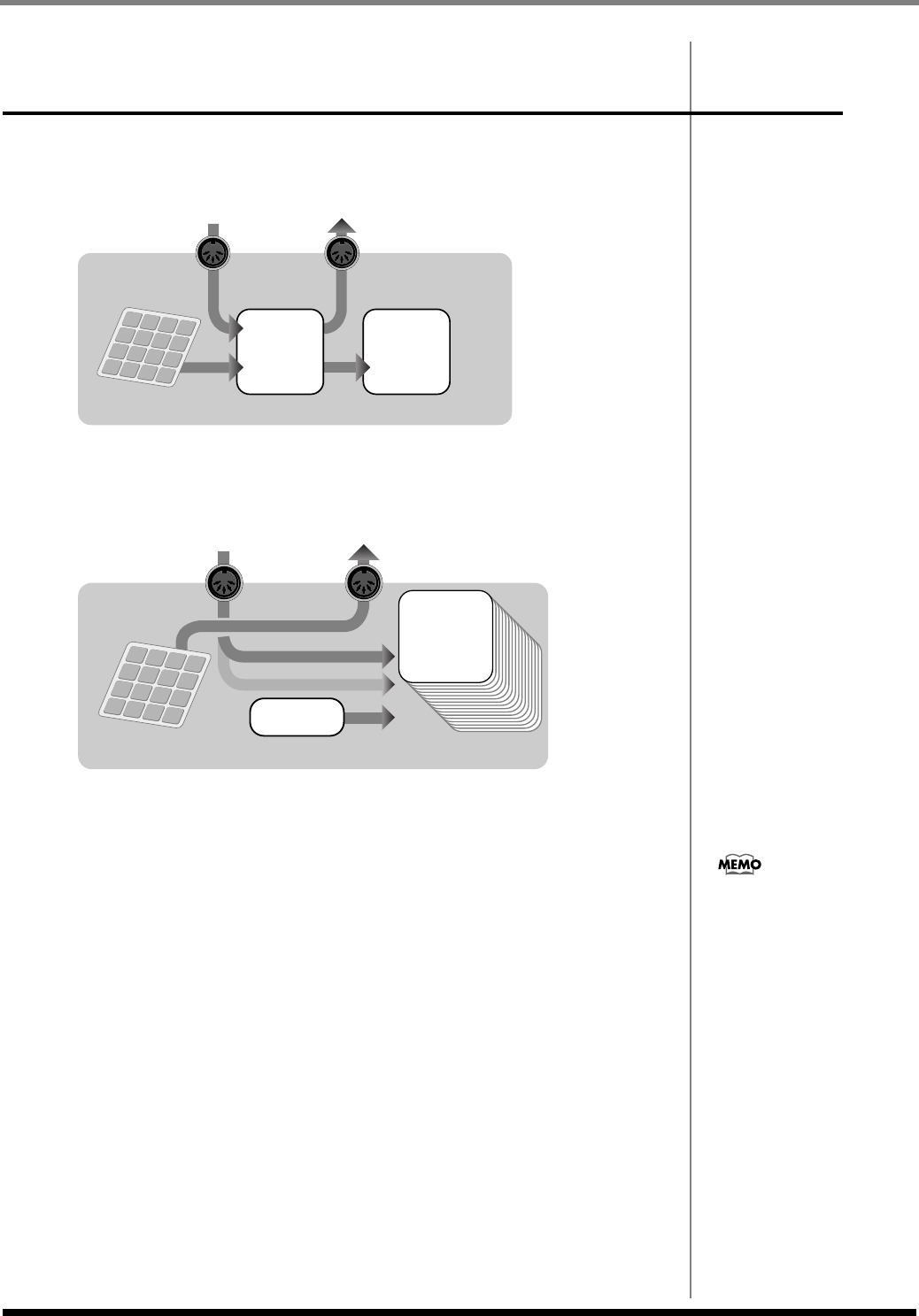
166
Using the MV-8000 with MIDI or V-LINK devices
Performance Data Flow and Limitations
in Multi Timbre Sampler Mode
As shown below, the performance data flow differs depending on the Multi Timbre
Sampler Mode setting in the MIDI screen.
When Off (normal)
Performance data received at MIDI IN or from the velocity pads is sent to MIDI OUT
and/or plays the MV-8000's instruments according to the Output Assign parameter
and Output Assign MIDI parameter of the current track.
When On
The MV-8000 will operate in the following way.
• Operate as a multi-timbral sound module
Performance data received at MIDI IN is sent to the instruments. Instrument part 1
receives MIDI channel 1, instrument part 2 receives MIDI channel 2, etc., ... and
instrument part 16 receives MIDI channel 16.
• Transmit performance data from the velocity pads as MIDI messages
Your playing on the velocity pads is transmitted as MIDI messages. The performance
data from the velocity pads is transmitted from the MIDI output (MIDI OUT A/B
connector, R-BUS connector) and channel specified by the Pad Tx Channel parameter
in the MIDI screen.
Limitations when Multi Timbre Sampler Mode is On
• Performance data from the velocity pads cannot be sent to the internal sound
generator.
• Performance data cannot be recorded on the MV-8000's internal sequencer.
• Multi Timbre Sampler Mode is available only while the following screens are
displayed.
SEQUENCE screen
(p. 205)
INSTRUMENTS screen
(p. 265) (performance data from the velocity pads is not
transmitted)
EFFECTS screen
(p. 372)
MIXER
(p. 378)
Velocity Pads
MIDI IN
MIDI OUT A/B/R-BUS
Sequencer Instruments
MV-8000
Velocity Pads
MIDI IN
MIDI OUT A/B/R-BUS
Sequencer Instruments
(1~16)
MIDI Ch. 16
~
MIDI Ch. 1
MV-8000
The correspondence between
the incoming MIDI channels
and the instrument part played
b
y each channel is fixed. You
cannot change this
correspondence.
ECS05_manual_e.book 166 ページ 2005年11月30日 水曜日 午前11時14分


















